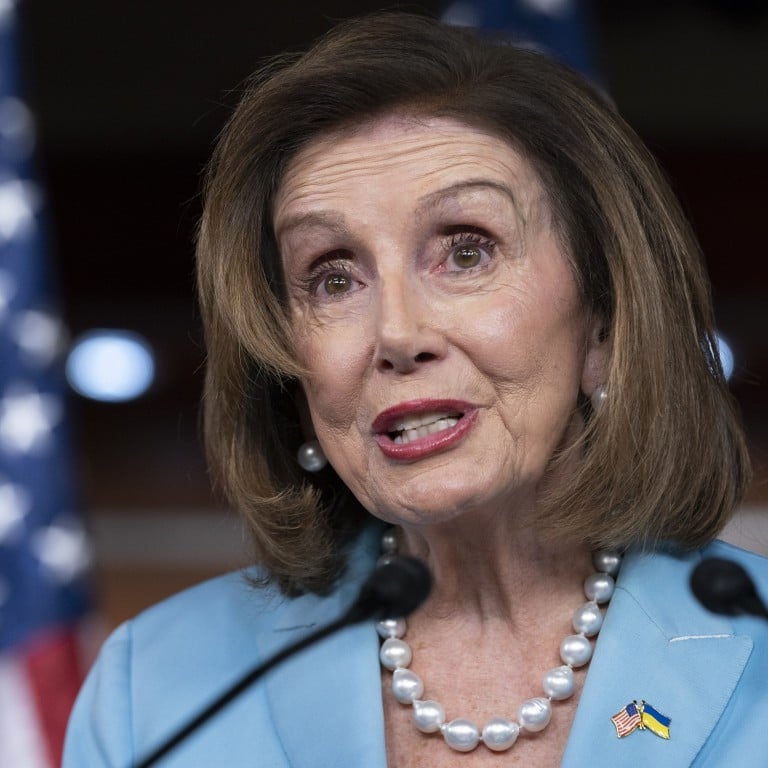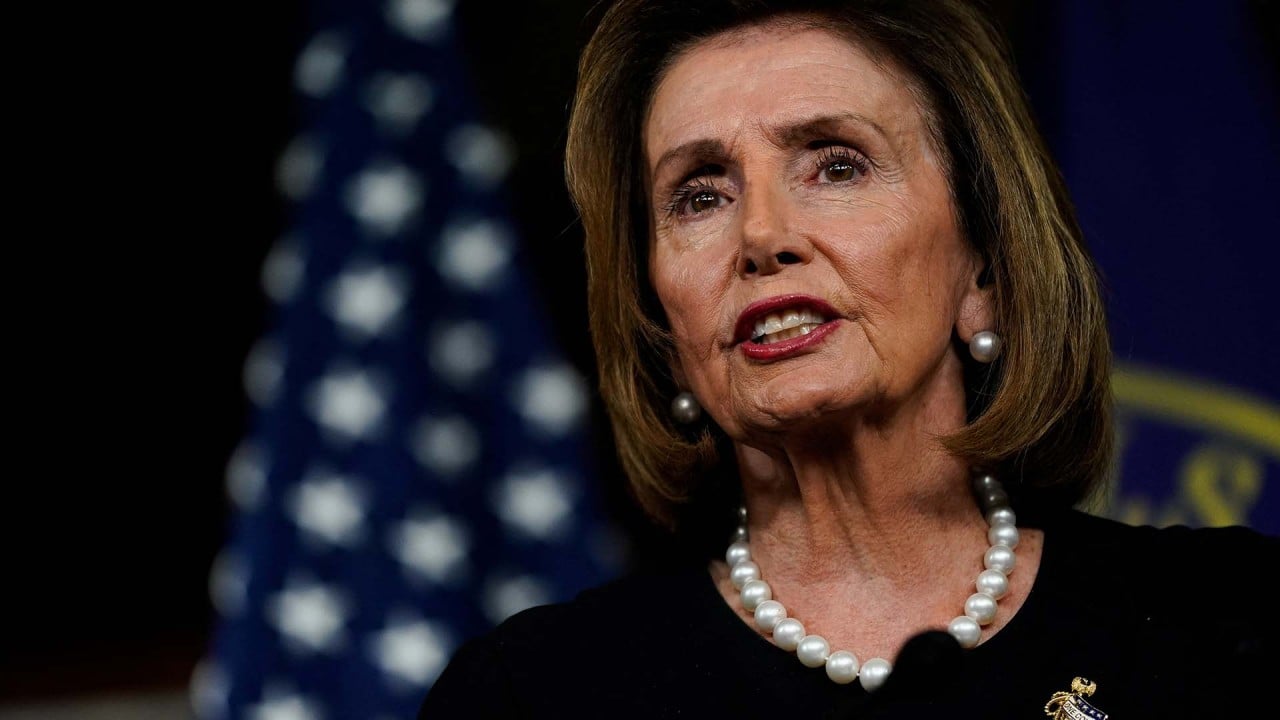
The US military is making plans in the Indo-Pacific in case Nancy Pelosi travels to Taiwan
- If the US House speaker did go ahead with Taiwan visit she would be entering region where a mishap, misstep or misunderstanding could put her in danger
- Recent incidents involving the PLA include dangerously close fly-bys with aircraft from other nations, harassment and obstruction of air and ship crews
Officials told Associated Press that if Pelosi went to Taiwan – still an uncertainty – the military would increase its movement of forces and assets in the Indo-Pacific region. They declined to provide details, but said that fighter jets, ships, surveillance assets and other military systems would likely be used to provide overlapping rings of protection for her flight to Taiwan and any time on the ground there.
Any foreign travel by a senior US leader requires additional security. But officials said this week that a visit to Taiwan by Pelosi – who would be the highest-ranking US elected official to visit the island since 1997 – would go beyond the usual safety precautions for trips to less risky destinations.
Asked about planned military steps to protect Pelosi in the event of a visit, US General Mark Milley, chairman of the Joint Chiefs of Staff, said on Wednesday that discussion of any specific travel was premature. But, he added, “if there’s a decision made that Speaker Pelosi or anyone else is going to travel and they asked for military support, we will do what is necessary to ensure a safe conduct of their visit. And I’ll just leave it at that”.
Beijing considers self-ruled Taiwan its own territory and has raised the prospect of annexing it by force. The US maintains informal relations and defence ties with Taiwan, even as it recognises Beijing as the government of China.
Beijing says it seeks peaceful Taiwan reunification but delivers warning
Dozens of such manoeuvres had occurred this year alone, Ely Ratner, US assistant defence secretary, said on Tuesday at a South China Sea forum by the Centre for Strategic and International Studies. China denies the incidents.
The US officials, who spoke on condition of anonymity to discuss sensitive security issues, described the need to create buffer zones around the speaker and her plane. The US already has substantial forces spread across the region, so any increased security could largely be handled by assets already in place.
The military would also have to be prepared for any incident – even an accident either in the air or on the ground. They said the US would need to have rescue capabilities nearby and suggested that could include helicopters on ships already in the area.
Pelosi, a Democrat from California, has not publicly confirmed any new plans for a trip to Taiwan. She had planned to go in April but postponed the trip after testing positive for Covid-19.
The White House on Monday declined to weigh in directly on the matter, noting she had not confirmed the trip. But President Joe Biden last week raised concerns about it, telling reporters that the military considered her trip “not a good idea right now”.
US officials have said the administration doubts that China would take direct action against Pelosi herself or try to sabotage the visit. But they do not rule out the possibility that Beijing could escalate provocative overflights of military aircraft in or near Taiwanese airspace and naval patrols in the Taiwan Strait should the trip take place. And they don’t preclude Chinese actions elsewhere in the region as a show of strength.
Security analysts were divided on Tuesday about the extent of any threat during a trip and the need for any additional military protection.
The biggest risk during Pelosi’s trip is of some Chinese show of force “gone awry, or some type of accident that comes out of a demonstration of provocative action”, said Mark Cozad, acting associate director of the International Security and Defence Policy Centre at the Rand Corporation.
“So, it could be an air collision. It could be some sort of missile test and, again, when you’re doing those types of things, you know, there is always the possibility that something could go wrong.”
Barry Pavel, director of the Scowcroft Centre for Strategy and Security at the Atlantic Council, scoffed at US officials’ reported consideration of aircraft carriers and warplanes to secure the speaker’s safety. “Obviously, the White House does not want the speaker to go and I think that’s why you’re getting some of these suggestions.”
“She’s not going to go with an armada,” Pavel said.
US signals Taiwan policy has not changed ahead of Xi-Biden talks
They also said that a stepped-up US military presence to safeguard Pelosi risked raising tensions.
“It is very possible that … our attempts to deter actually send a much different signal than the one we intend to send,” Cozad said. “And so you get into … some sort of an escalatory spiral, where our attempts to deter are actually seen as increasingly provocative, and vice versa. And that can be a very dangerous dynamic.”
On Monday, Chinese foreign ministry spokesman Zhao Lijian said Beijing had repeatedly expressed its “solemn position” over a potential Pelosi visit. He told reporters Beijing was prepared to “take firm and strong measures to defend national sovereignty and territorial integrity”.
US officials say the prospects of an intercept or show of force by PLA aircraft near Pelosi’s flight raises concerns, prompting the need for American aircraft and other assets to be nearby.
US Navy stepping up activities in South China Sea, says Beijing think tank
The US aircraft carrier USS Ronald Reagan and its strike group is currently operating in the western Pacific, and made a port call in Singapore over the weekend. The strike group involves at least two other navy ships and Carrier Air Wing 5, which includes F/A-18 fighter jets, helicopters and surveillance aircraft.



